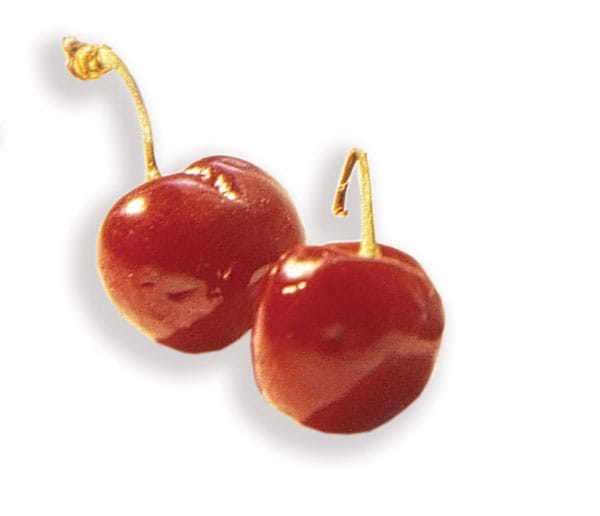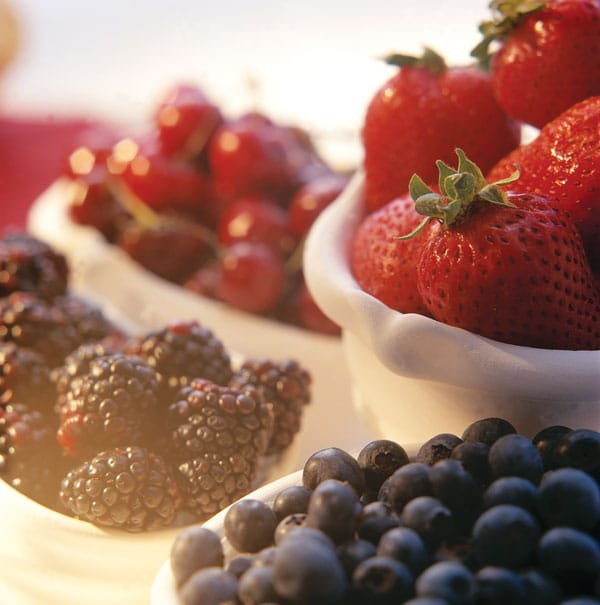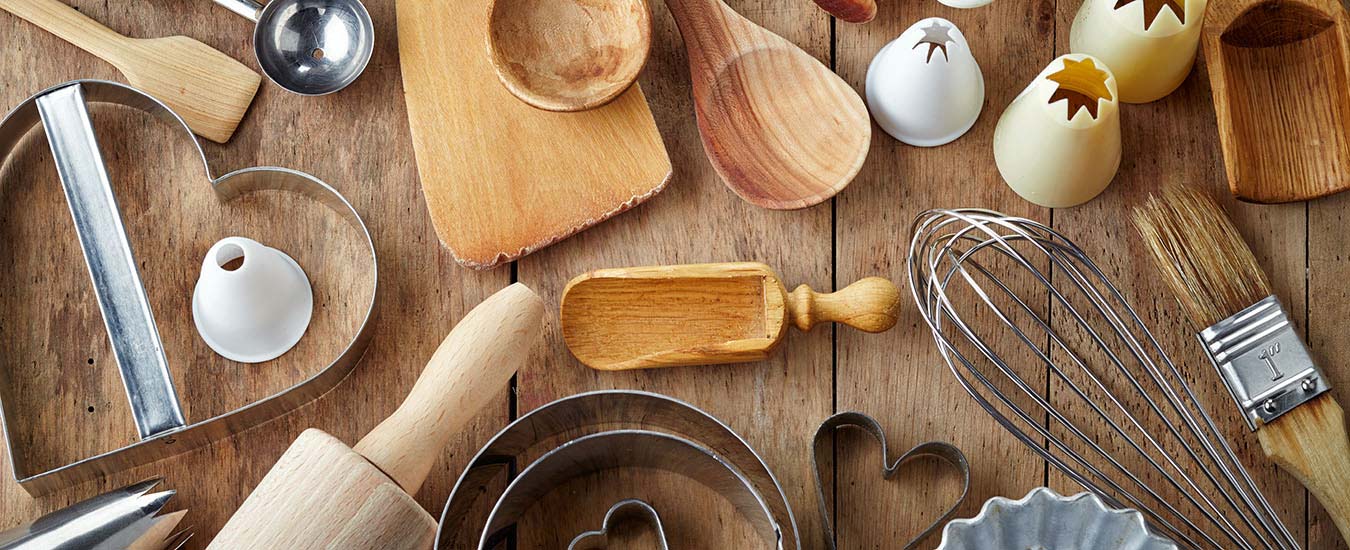But our focus that day was on jam-making and how it has changed, or not changed, over the years.
Kay's daughter, Ellen Kennie of Gaspereau, is at least the third generation of the Carey/Lockhart families of Lockhartville and Avonport to carry on the family tradition of turning fruit into jam. It's safe to say the tradition had earlier roots, and with Ellen's five daughters already helping with the hulling and bottling, it is sure to continue.

"I started making every kind of jam there was, but over the years I've weeded them out. Now I just make the family favourites," Ellen says.
That still leaves a pretty good variety.
"Two of my daughters, Anna and Jaclyn, like strawberry jam. Sarah and Madeline like raspberry, Allison likes cherry and my husband Peter likes red currant," she says.

It was the discovery of pectin in the early 20th century that changed the jam-making process, especially after the mid-1920s, when the product became widely available for consumer use. While many today still prefer the old, traditional way of boiling the fruit and sugar together until it forms a jell, others turn to the commercial product which shortens the cooking time considerably while almost doubling the yield.
"When I was growing up, my mother (Ellen Carey Lockhart) boiled the jam down for a long time, then took it off the heat and bottled it," Kay says. And there was no thought of freezing the fruit to make into jam at a later time when the weather was cooler. It had to be done when the fruit was ripe for the picking. No matter how hot the weather, the wood stove needed to be fed constantly to keep the jam at a rolling boil.
Jam-making then was just another chore that had to be done to feed a family through the long winter months. So perhaps Kay was justified in saying that she also made jam, not for pleasure, but because she had to.
"Whatever we grew on the farm, I turned into jam for my family. But, now that I'm feeding only two people, I make three batches of strawberry jam, two of strawberry rhubarb, and that's usually it. I just cook it down, put it in containers and freeze it. It's regular jam, but it's fresher when it's stored in the freezer," she says.
For Ellen, jam-making is not the chore it was for her mother and grandmother. Perhaps because it's no longer a necessity, she's able to take pleasure and satisfaction from turning out gleaming bottles of colourful homemade sweetness. And with less effort.
Because her family doesn't like chunky jam, she puts the fruit through a food processor, a convenience her grandmother didn't have. And she ignores the experts who advise against doubling recipes.
"I make a double batch of each kind and I've never had a problem." Nor does she go through the tiresome skimming process. "I always add a teaspoon of butter to the jam during cooking, which prevents foam from forming," she says.
Along with the recipes from these three generations of jam makers, I have included a no-cook jam from the makers of Certo pectin, and among others, my personal favourite. Try July Jam once and I know you'll be hooked.
Tip: Since sugar is a preservative and works in combination with pectin and acid to form a jell, always use the amount called for in a recipe.
Tip: If you can't stand the heat of summer-time jam-making, freeze the berries and wait until the weather turns cooler. It will.
Ellen Kennie's Strawberry Jam
10 and 1/2 cups prepared strawberries
2 (57 g) boxes Certo crystals
1 teaspoon butter
14 cups sugar
Chop strawberries in food processor. Measure 10 and 1/2 cups and place in a preserving kettle or large pot. Stir in pectin crystals and butter. (The butter prevents foam from forming.) Bring to a boil; stir in sugar. Continue stirring and cooking over high heat until mixture comes to a full rolling boil. Boil 1 minute. Remove from heat and let rest, stirring occasionally, for about 15 minutes. Bottle, seal, label and store in a cool lace. Makes 15 (8 ounce) jars.
Kay Stirling's Strawberry Rhubarb Jam
2 cups crushed strawberries
1 and 1/2 cups finely chopped rhubarb
6 and 1/2 cups sugar
1 pouch Certo liquid fruit pectin
Measure prepared fruit into a preserving kettle or large pot. Add sugar and mix well. Bring to a rolling boil over high heat and boil hard for 1 minute, stirring constantly. Remove from heat; immediately stir in liquid pectin. Stir and skim for 5 minutes to prevent floating fruit. Pour into jars or plastic containers, cover and store in freezer. Alternatively, pour jam into warm sterilized jars, leaving 1/4 inch head space, seal, label and store in a cool, dry place.
Old-Style Strawberry Jam (As Ellen Lockhart may have made it)
2 quarts strawberries
6 cups sugar
Wash berries, hull and pat dry. Place in a preserving kettle or large pot over high heat. As berries heat, crush with a potato masher. When boiling, add sugar and cook for 20 to 40 minutes, or until the jell stage is reached. To prevent scorching, stir frequently as mixture thickens. Pour into hot clean jars, seal, label and store in a cool place. Makes about 8 (8-oz) jars.
No-Cook Strawberry Jam
1 quart (1 L) fully ripe strawberries
4 cups (1 L) sugar
1 pouch liquid fruit pectin
2 tablespoons (30 mL) lemon juice
Wash berries, hull and pat dry, then thoroughly crush them, a layer at a time. Measure 1 and 3/4 cups (400 mL) into a large bowl. Stir in sugar, mixing well. Let stand 10 minutes. Add liquid pectin and lemon juice; stir for 3 minutes, or until most of the sugar is dissolved. Pour into clean jars or plastic containers, cover tightly and let stand at room temperature for up to 24 hours, until a set is formed. Store in freezer. Makes 5 cups (1200 mL).
Note: Jam can be stored in the refrigerator if used within 3 weeks.
Raspberry Jam
4 cups (1 L) fresh raspberries, firmly packed
3 cups (750 mL) sugar
1/4 cup lemon juice
In a preserving kettle or large pot, combine raspberries and sugar. Cook, stirring, over low heat until sugar is dissolved. Bring to a rolling boil over high heat. Cook, uncovered, for 5 minutes. Add lemon juice and continue boiling for 5 to 10 minutes, or until the jell stage is reached. Remove from heat and let stand 5 minutes. Stir and skim for 5 minutes to prevent floating fruit. Pour into hot sterilized jars. Seal, label, and store in a cool place. Makes 4 (8 oz) jars.
Blueberry Jam
5 cups (1.25 L) blueberries, lightly crushed
7 cups (1.75 L) sugar
2 tablespoons (30 mL) lemon juice
1 (170 mL) package liquid pectin
Place blueberries in a preserving kettle or large pot; lightly crush with a potato masher. Bring to a rolling boil over high heat. Boil 1 minute, stirring constantly. Remove from heat and immediately stir in pectin. Stir and skim for 5 minutes to prevent floating fruit. Pour into hot sterilized jars. Seal, label and store in a cool place. Makes 9 (8 oz) jars.
July Jam

2 cups (500 mL) pitted sour red cherries
2 cups (500 mL) red gooseberries, topped and tailed
2 cups (500 mL) red currants, stemmed
2 cups (500 mL) raspberries
5 cups (1.25 L) sugar
Place all fruits in a large heavy-bottomed saucepan. Crush slightly. Bring to a boil and boil uncovered for 15 minutes. Add sugar. Cook 20 to 30 minutes longer until set stage is reached. Pour into hot sterilized jars. Seal, label, and store in a cool place. Makes 6 (8-oz) jars.
What makes a jam set?
The pectin that occurs naturally in fruits or is produced commercially helps jam to set. Jams made with low-pectin fruits, such as berries, need to be cooked longer than those that have pectin added. Since fruits lose pectin as they ripen, it's good to have some slightly under-ripe berries in the pot (up to one-third of the total amount) when making jam without added pectin. Commercial pectin comes in crystal or liquid form, and should not be interchanged. Check the "best before" date and follow the recipe exactly.
To test for a set
Before starting the jam, place two small plates in the freezer to chill. When ready to test jam for jell formation, drop a teaspoonful on a cold plate and return to freezer for 2 minutes. Run your finger through the cooled jam. If the surface wrinkles, the setting point has been reached. If not, cook a couple of minutes more, then test again on the second chilled plate. Repeat, if necessary. The set test is not necessary when commercial pectin is added.
It's simply amazing what 4,000 Canadian jam makers say. Certo did a survey recently that showed:
- Jam makers in New Brunswick make more strawberry jam than other Canadians (86 per cent)
- Prince Edward Island jam makers make the most raspberry jam (81 per cent)
- Among Canadians, Newfoundlanders make the most cooked jams and New Brunswickers make the most no-cook jams
- Nova Scotians make more jam during the summer months than other Canadians (90 per cent)
